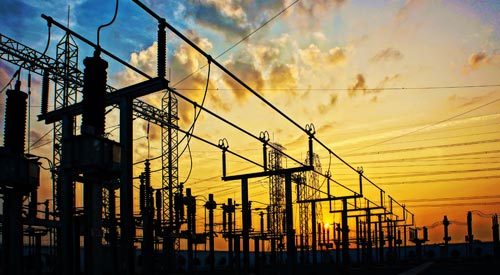California Regulators Direct PG&E to Prioritize Storage for Peak Demand
Renewable Energy World: California, the state that helped birth the global boom in battery-toting electric vehicles, is trying to spark a similar transformation for utilities. And that spells trouble for power plants all across the U.S. that run on natural gas.
The California Public Utilities Commission approved an order Thursday that will require PG&E Corp., the state’s biggest utility, to change the way it supplies power when demand peaks. Instead of relying on electricity from three gas-fired plants run by Calpine Corp., PG&E will have to use batteries or other non-fossil fuel resources to keep the lights on in the most-populated U.S. state.
The shift is possible in California partly because there’s a surplus of solar power, after a surge of rooftop panels and large-scale gathering systems helped double the renewable energy it used over the past decade. Batteries can charge up in daylight and dispense electricity later. With improved technology and lower costs, storage systems are becoming more viable for utilities, especially in a state hoping to get half its power from wind and solar by 2030 and targeting major cuts in greenhouse gas emissions.
Tags
Share
Top Stories
- Energy Department wants national labs to drive regional innovation
- How solar surge saved Europe from the energy crisis
- Study: Puerto Rico should go solar to meet clean energy goal
- The Federal Government Can Use Its Buying Power to Help the Environment and Save Taxpayers Money
- EVs, Building Emissions Among Biden’s Sustainable Energy Priorities
- Deploying Clean Energy Tech Depends on Cost Efficiency, Officials Say
- National Labs to Receive $1.5B Funding Boost
- Solar, telecom rollouts offer lessons for mass EV charging station deployments
- EPA to strengthen proposed rule on methane emissions from oil, gas
- Getting to ‘Net-zero’ Emissions: How Energy Leaders Envision Countering Climate Change in the Future
- Tech Wanted: Government Calls on Industry to Help with Net-Zero Carbon Buildings
- EPA Calls Out Environmental Racism in Louisiana’s Cancer Alley
- Hawaii to U.S. Navy: Quit Polluting Our Waters
- Climate-Based Trainings and Performance Plans Are Coming for Federal Employees
- Infrastructure permitting reform plan blocked in Senate
- Hydro-Québec’s radical but careful digital transformation could be a model for utilities everywhere
i360Gov Newsletters
The most significant government policy, business, and technology news and analysis delivered to your inbox.
Subscribe NowTrending
- Solar, telecom rollouts offer lessons for mass EV charging station deployments
- Tech Wanted: Government Calls on Industry to Help with Net-Zero Carbon Buildings
- Energy Asks for New R&D in Critical Materials for Clean Energy
- Hydro-Québec’s radical but careful digital transformation could be a model for utilities everywhere
- California sets ‘ambitious’ offshore wind goal of up to 5 GW by 2030
- TSA revises cyber rules for pipelines
- Energy Awards Over $540 Million for Green Tech Research
- National Labs to Receive $1.5B Funding Boost


















